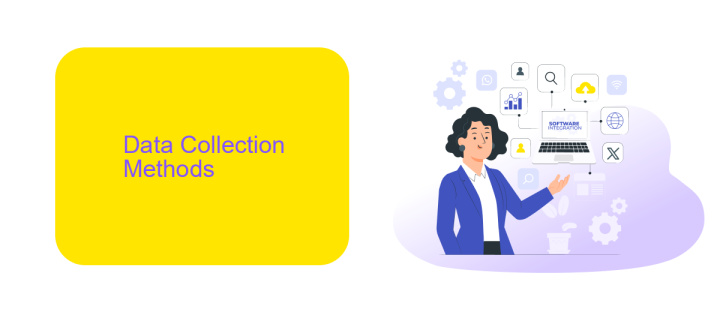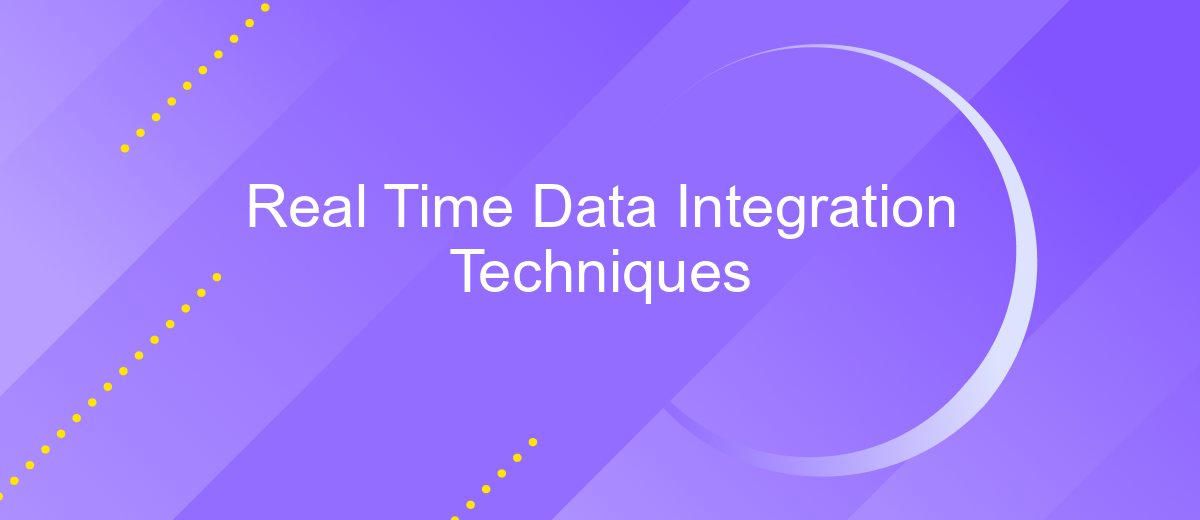Real Time Data Integration Techniques
In today's fast-paced digital landscape, real-time data integration is crucial for businesses seeking to maintain a competitive edge. This article explores various techniques to seamlessly merge data from disparate sources, ensuring timely and accurate information flow. From ETL processes to advanced streaming technologies, we delve into the methods that enable organizations to harness the power of real-time data for informed decision-making.
Introduction
Real-time data integration is a critical component for businesses looking to stay competitive in today's fast-paced environment. As companies increasingly rely on data-driven decision-making, the need for seamless and instantaneous data integration has never been more crucial. This process involves the continuous synchronization of data between different systems, ensuring that information is always up-to-date and readily available for analysis and action.
- Data synchronization: Ensures all systems reflect the most current information.
- API integrations: Connects disparate systems to enable real-time data flow.
- ETL processes: Extract, Transform, Load operations that handle data movement and transformation.
- Middleware solutions: Software that facilitates communication between different applications.
Tools like ApiX-Drive simplify the setup of real-time data integrations by offering a user-friendly interface and robust API connectivity. With such services, businesses can automate workflows, reduce manual data entry, and ensure data consistency across various platforms. As a result, organizations can make informed decisions quickly, enhancing operational efficiency and driving growth.
Data Collection Methods

Real-time data integration begins with effective data collection methods. One common approach is the use of webhooks, which allow applications to automatically send real-time data to other systems as soon as an event occurs. This method is efficient for scenarios where immediate data transfer is critical, such as financial transactions or user activity tracking. Another method is the implementation of APIs (Application Programming Interfaces) that facilitate the seamless exchange of data between different software systems. APIs are particularly useful for integrating disparate systems and ensuring that data flows smoothly in real-time.
For those seeking to simplify the setup of these integrations, services like ApiX-Drive offer valuable solutions. ApiX-Drive provides a user-friendly platform that enables businesses to connect various applications and automate data transfers without extensive coding knowledge. This service supports a wide range of applications and ensures that data is collected and integrated in real-time, enhancing operational efficiency. By leveraging such tools, organizations can ensure that their data collection processes are both robust and agile, paving the way for more responsive and informed decision-making.
Data Transformation and Cleaning

Data transformation and cleaning are pivotal steps in real-time data integration, ensuring that incoming data is accurate, consistent, and ready for analysis. These processes involve converting data into a suitable format, correcting errors, and removing duplicates to maintain data integrity.
- Data Standardization: Ensure all data follows a consistent format.
- Error Correction: Identify and fix inaccuracies in the data.
- Duplicate Removal: Eliminate redundant data entries.
- Data Enrichment: Enhance data quality by adding missing information.
- Validation: Verify data accuracy against predefined rules.
Tools like ApiX-Drive facilitate these processes by offering automated data transformation and cleaning functionalities. They integrate seamlessly with various data sources, allowing businesses to streamline their data workflows efficiently. By leveraging such services, organizations can significantly reduce manual effort and ensure real-time data is always reliable and ready for actionable insights.
Data Integration Techniques

Real-time data integration is essential for organizations to maintain a competitive edge by ensuring that data from various sources is accurately and swiftly integrated. One of the most effective approaches is using ETL (Extract, Transform, Load) processes, which help in extracting data from different sources, transforming it into a usable format, and loading it into a destination system in real-time.
Another critical technique involves using data replication, where data changes are captured and replicated across systems almost instantaneously. This ensures that all systems have the most current data available, reducing latency and improving decision-making processes.
- ETL (Extract, Transform, Load)
- Data Replication
- Change Data Capture (CDC)
- API Integration
API integration is particularly effective for real-time data integration. Services like ApiX-Drive facilitate seamless API connections between various platforms and applications, automating the data transfer process. By leveraging such services, businesses can ensure that their data is consistently up-to-date and integrated across all systems, enhancing operational efficiency and data reliability.
Benefits and Use Cases of Real Time Data Integration
Real-time data integration offers numerous benefits, such as enhanced decision-making capabilities, improved customer experiences, and increased operational efficiency. By providing up-to-the-minute data, businesses can respond swiftly to market changes and customer needs. This immediacy allows for more accurate forecasting, better resource allocation, and the ability to identify and mitigate issues before they escalate. Additionally, real-time data integration supports seamless data flow across various platforms, ensuring that all departments have access to consistent and current information.
Real-time data integration is particularly beneficial in industries like finance, healthcare, and e-commerce, where timely information is crucial. For instance, in e-commerce, real-time data can improve inventory management and personalize customer interactions. Services like ApiX-Drive facilitate these integrations by offering user-friendly solutions to connect various applications and automate data workflows. By leveraging such tools, businesses can streamline their operations, reduce manual tasks, and focus on strategic initiatives. ApiX-Drive's robust platform ensures that data is synchronized in real-time, enhancing overall productivity and enabling a more agile business environment.
FAQ
What is Real Time Data Integration?
Why is Real Time Data Integration important?
What are some common techniques for Real Time Data Integration?
How can I implement Real Time Data Integration in my organization?
What challenges might I face with Real Time Data Integration?
Apix-Drive will help optimize business processes, save you from a lot of routine tasks and unnecessary costs for automation, attracting additional specialists. Try setting up a free test connection with ApiX-Drive and see for yourself. Now you have to think about where to invest the freed time and money!

